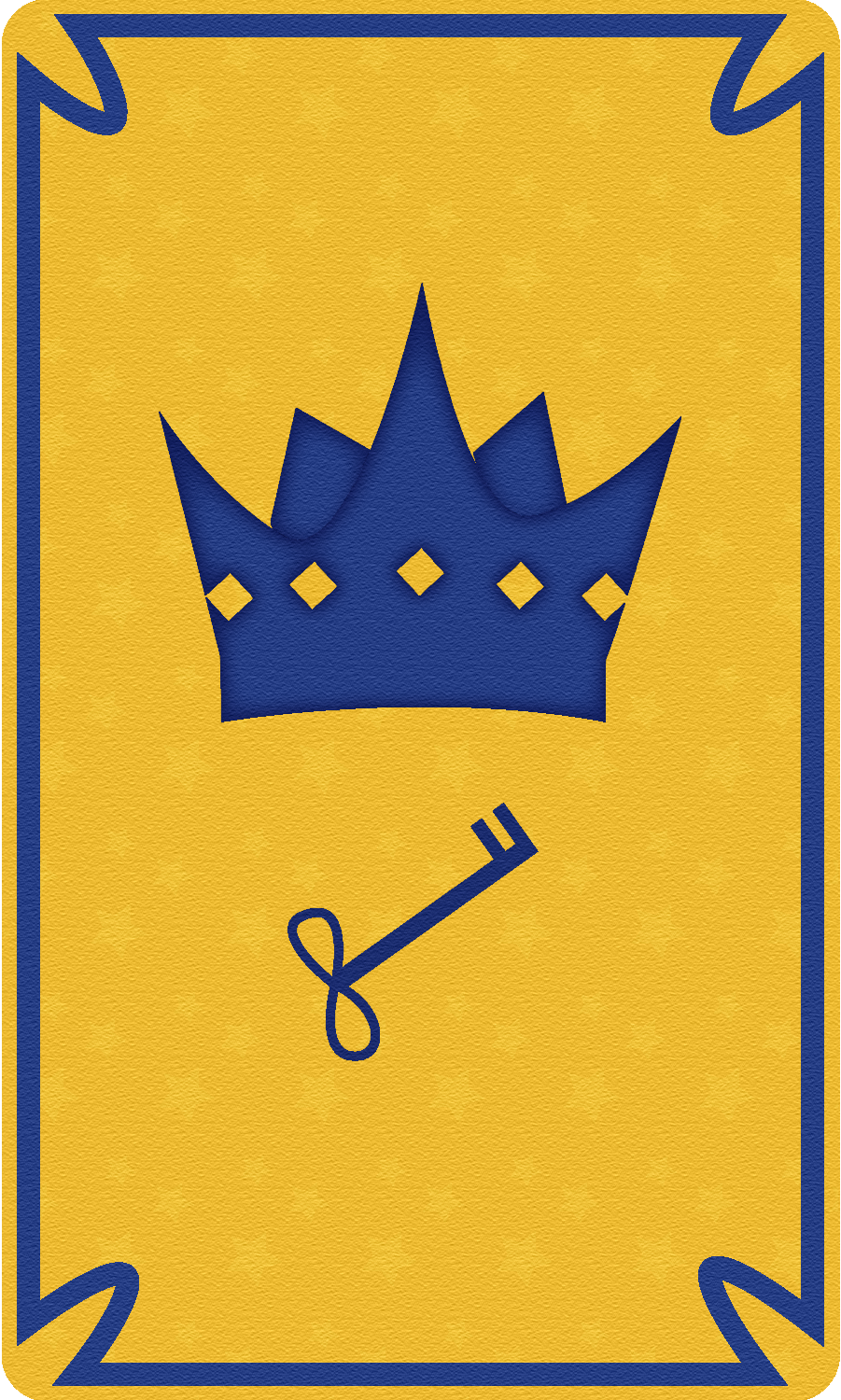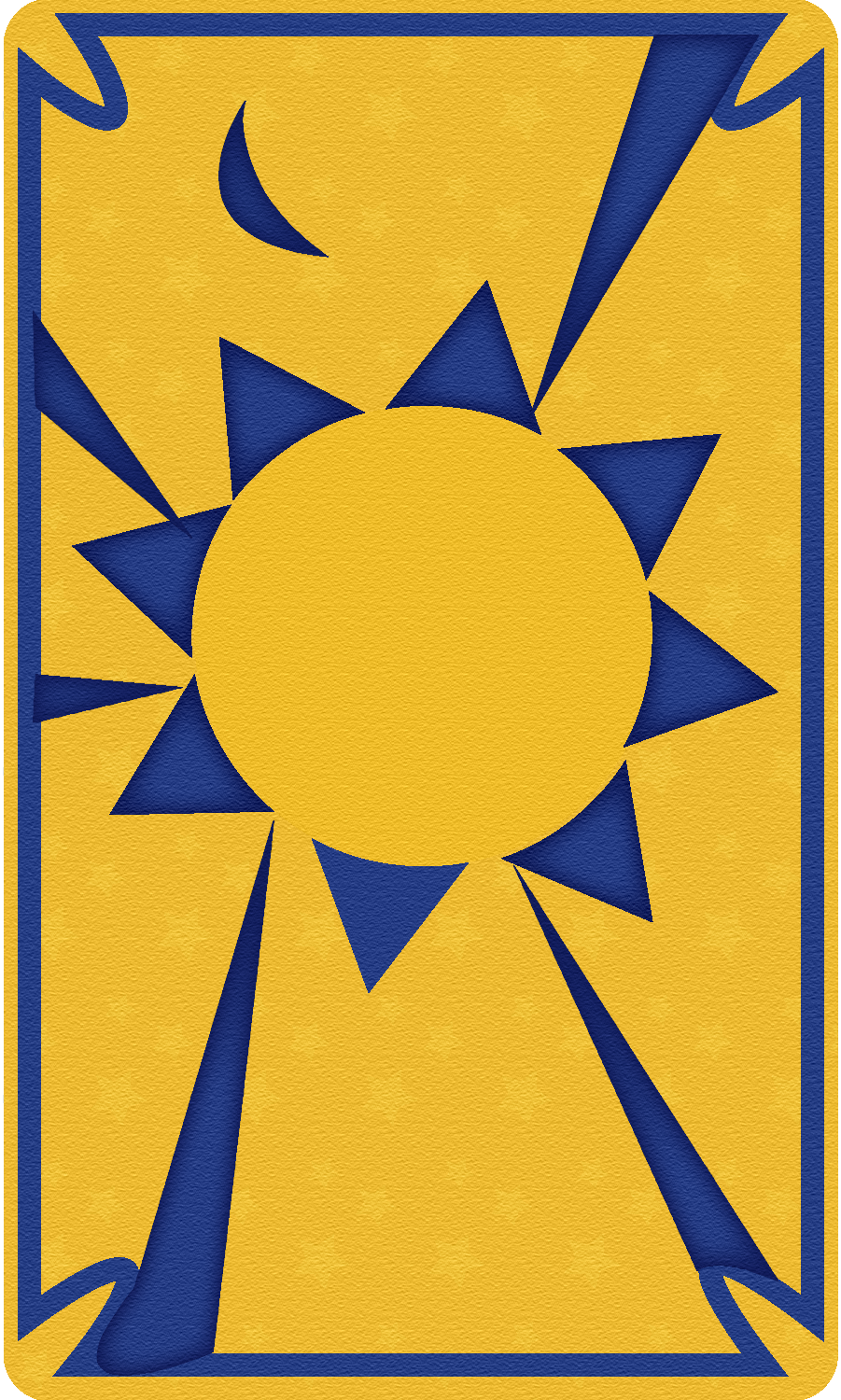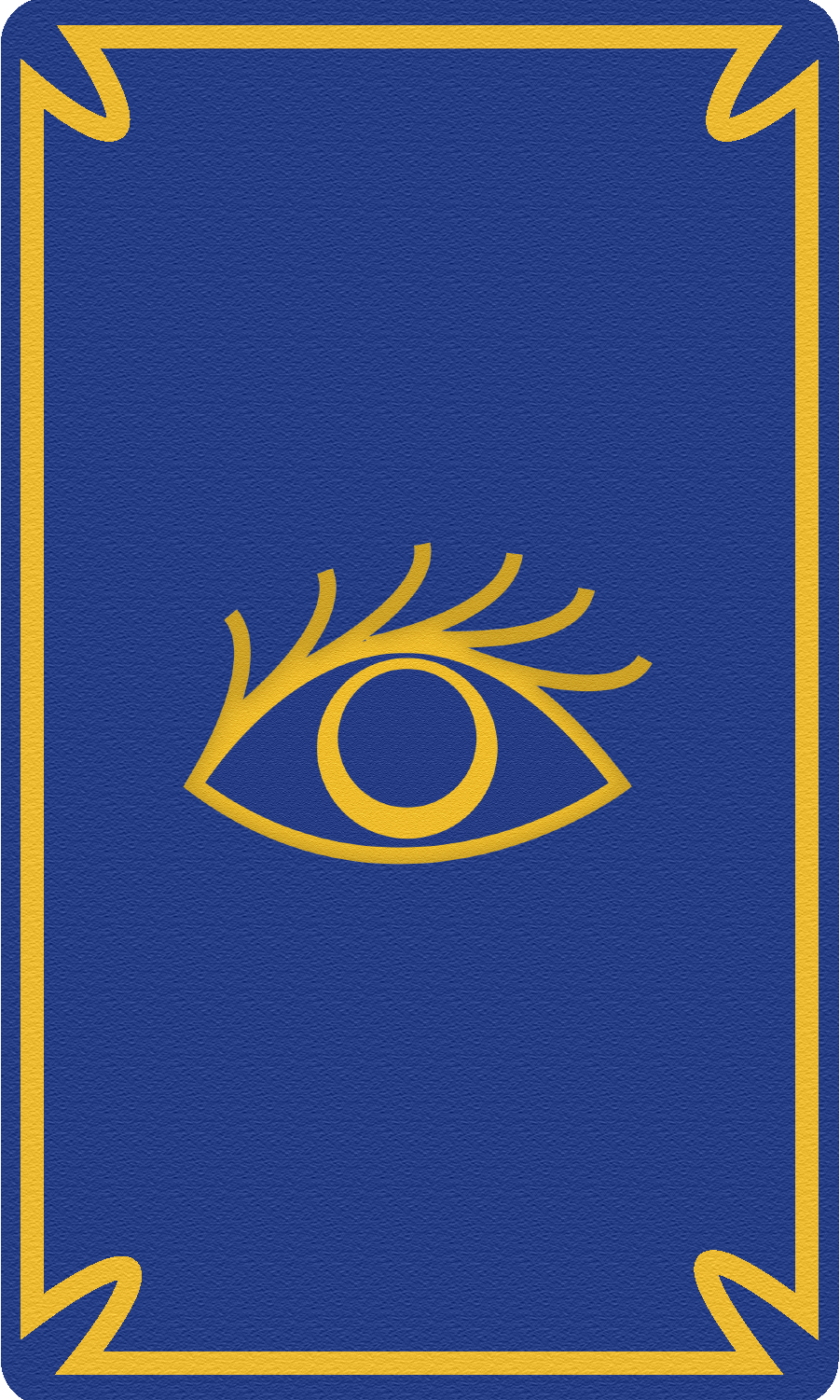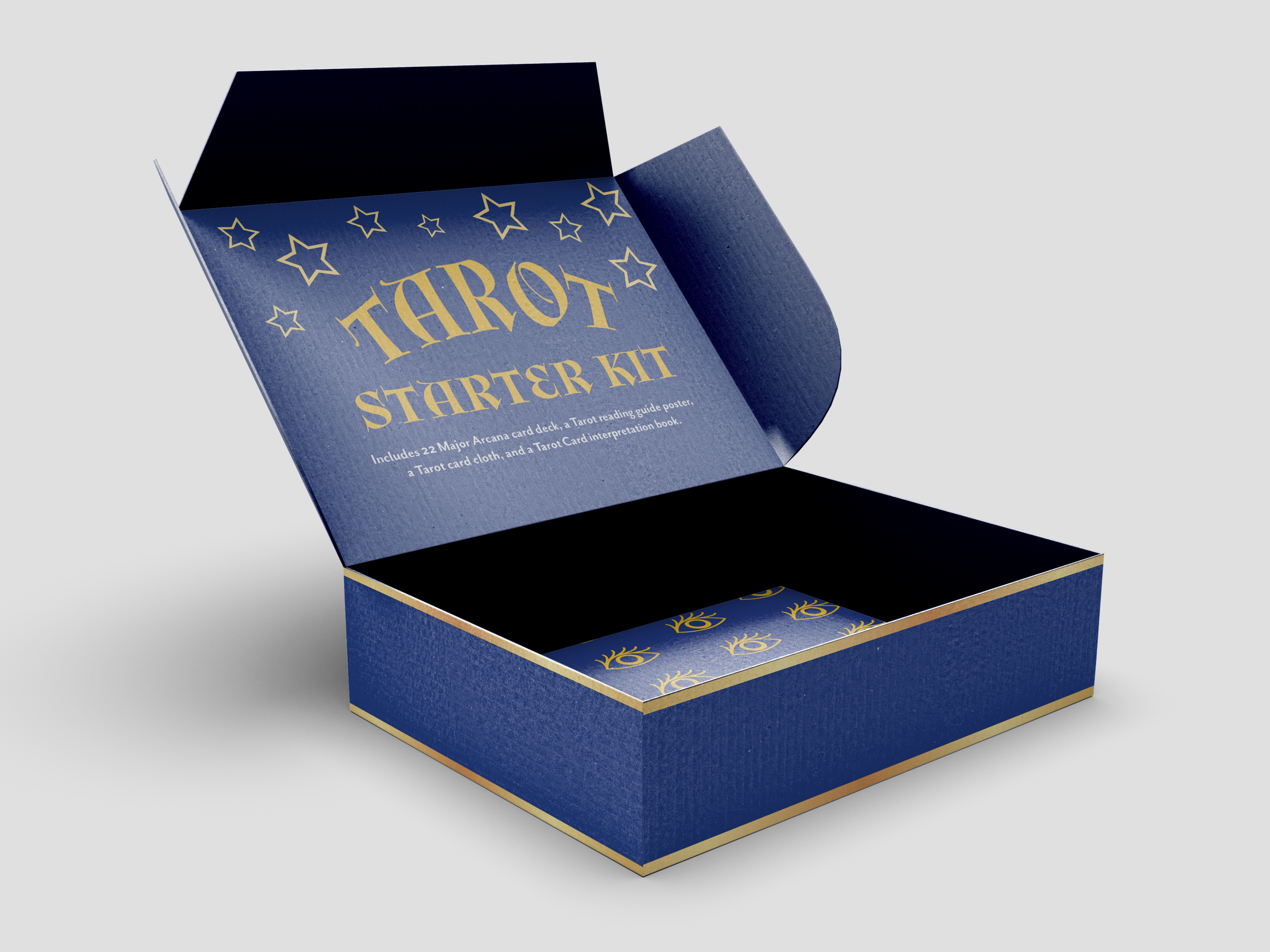How i tarot
A concept, all-inclusive start kit. Teaching the Art of card divination, How I Tarot (teh•row) offers people of any spiritual level a rush encounter with destiny.
Digital Illustration, Design Systems, Layout and Packaging DesignChallenge: Design a Tarot card deck and starter kit for Tarot reading and interpretation.
The starter kit is all inclusive, ready to give those searching a full introduction into Tarot cards.
The kit includes an instructive Tarot reading guide poster, a card interpretation book, customized Tarot card deck with 22 Major Arcana cards, and a Tarot cloth for placing the cards. Diviners will find supportive material throughout the instructive pieces to elevate the experience.

Tarot Reading Poster
The ancient art of reading Tarot cards requires a specific set-up as well as an understanding of the meaning behind orientation and placement. An instructive poster will provide a step-by-step guide for beginners performing a reading; including a template for how the cards get placed.
Ideation
A creative brief assisted in defining product, client, goals, and necessities of the design. During the process, a word list was formed from specifying traits of the brand. Analyzing infographic posters generated ideas for layout and visual tools for conveying information. Researching the subject of Tarot and possible thematic directions solidified two style boards.
Infographic Research and Style Boards
Sketches
A big goal with the layout was to portray a template of card placement and orientation for audiences to visually mimic in their Tarot readings. Initial sketches showed different solutions to this challenge.
Symbols and iconography
The clearer the content, the better when designing a teaching experience. Proportionally balanced text and graphic elements keep the reader from becoming overwhelmed.
Building visual tools made it possible to cut down the amount of words used, increasing comprehension. Icons that can be used in multiple places for quick recognition speed up the learning process.
Digital Renditions
Research, sketches, and icon exploration came together to form the initial drafts. From left to right, the progression is shown as design solutions were made. Some of the main problems being solved were grouping relative information and stripping away confusing or impertinent information.



The poster design went through critique and received feedback.
Initial issues dealt with information overload due to the high volume being conveyed. Hierarchy was made in consistently using the darker toned gold to lead the reader through the page and grab attention, while a lighter tone was used in background graphics. The steps are even further differentiated from other types of information by being in white.
A final version was born.
In order to fully conduct a reading, one must be able to interpret the cards.

card interpretation book
The next step in divining the cards is interpreting their meaning. Work began on the guide book, beginning with sketches for cover and page layout. The book focused on the Major Arcana of Tarot, or the higher ranked cards. There are 22 Major Arcana in the 78 card deck. Each card has an upright meaning as well as an upside down one.
Varying the layout of pages throughout the book was important to keep the book from being repetitive. Sketches allowed for planning out how many cards would be on each page, and how many pages were necessary total.
Digital Book Spreads
Rendered and refined, How I Interpret Tarot Cards organizes cards and their meanings’ in a clear manner, with a table of contents that makes it fast and easy for audiences to find the information they need.
Flip through the pages below.
A few snapshots of the book.

Tarot Card Deck
The guide book led to the card deck. Digitally illustrated, the designs are an expansion of early icons. Browse through all 22 Major Arcana below.

The Magician

The High Priestess

The Empress

The Emperor

The Hierophant

The Lovers

Justice

The Wheel of Fortune

The Hermit

Temperance

Chariot

The Devil

The Sun

The Star

Death

Strength


The Tower

The Hanged Man

The Moon

Judgement

The World

The Joker

All in one box
reflection
When the scope of a project is very flexible, as in this Tarot kit, it makes a lot of difference to start out with an adaptable design system. Creating visual tools and defining voice through color and content can carry a designer through a design process.


























